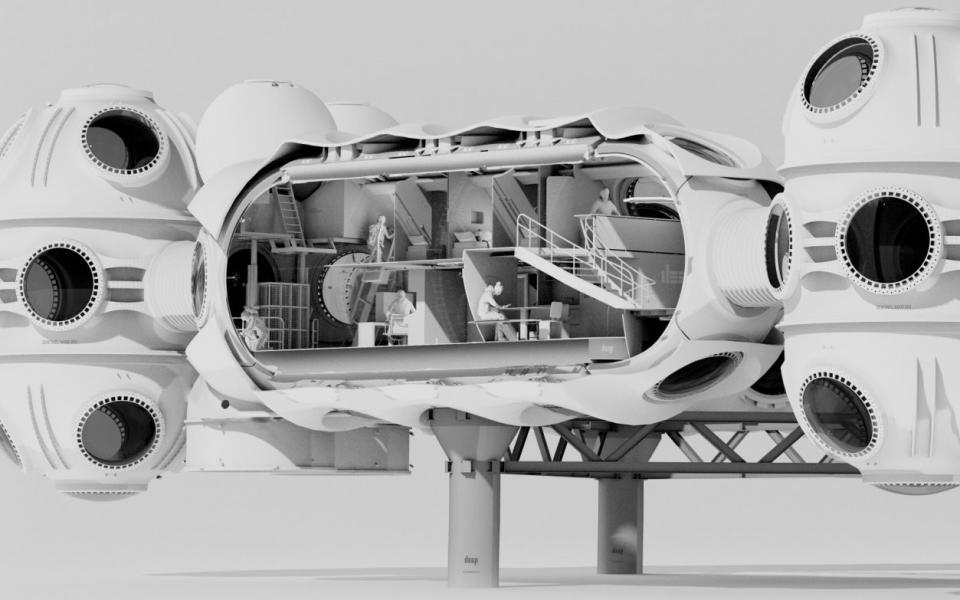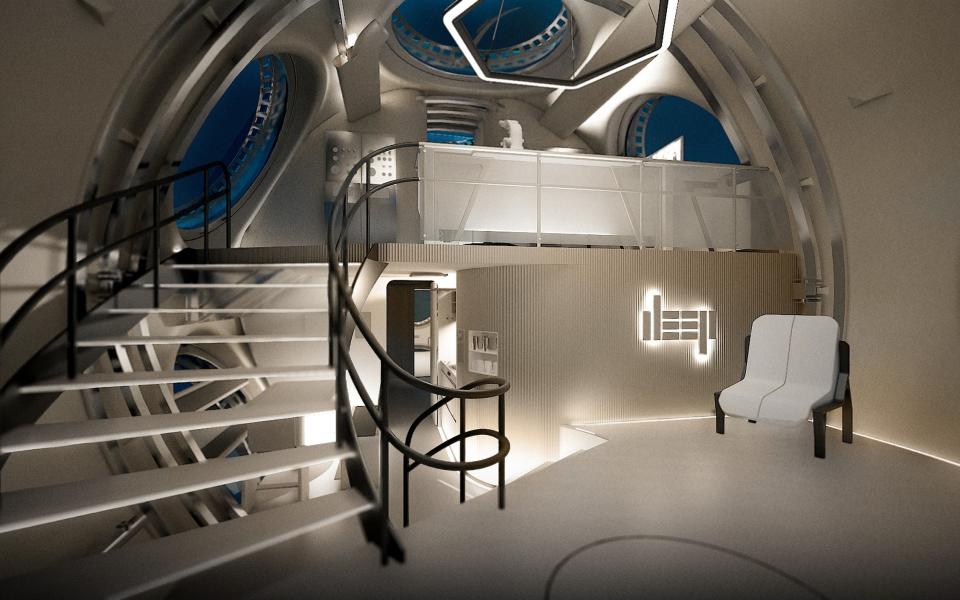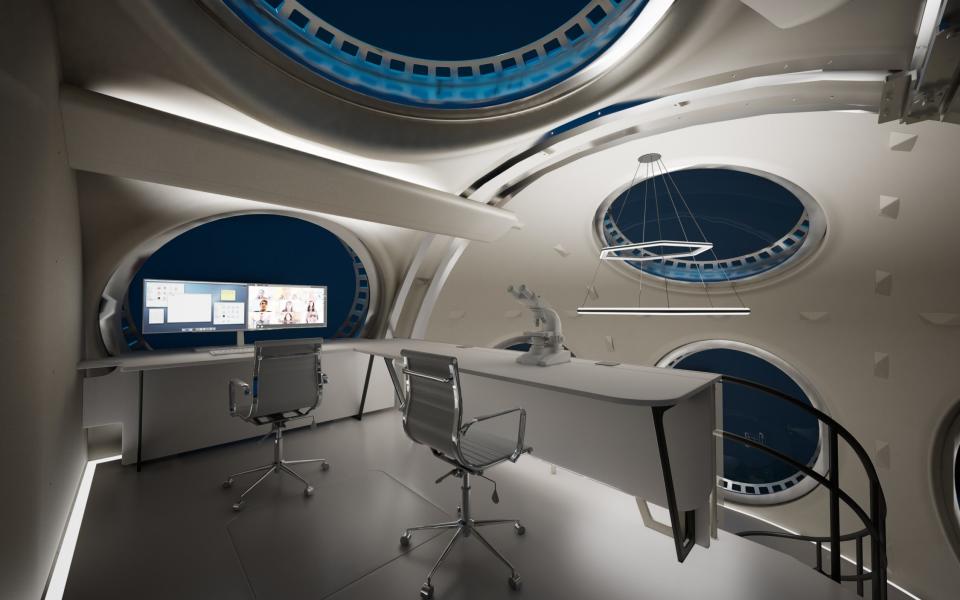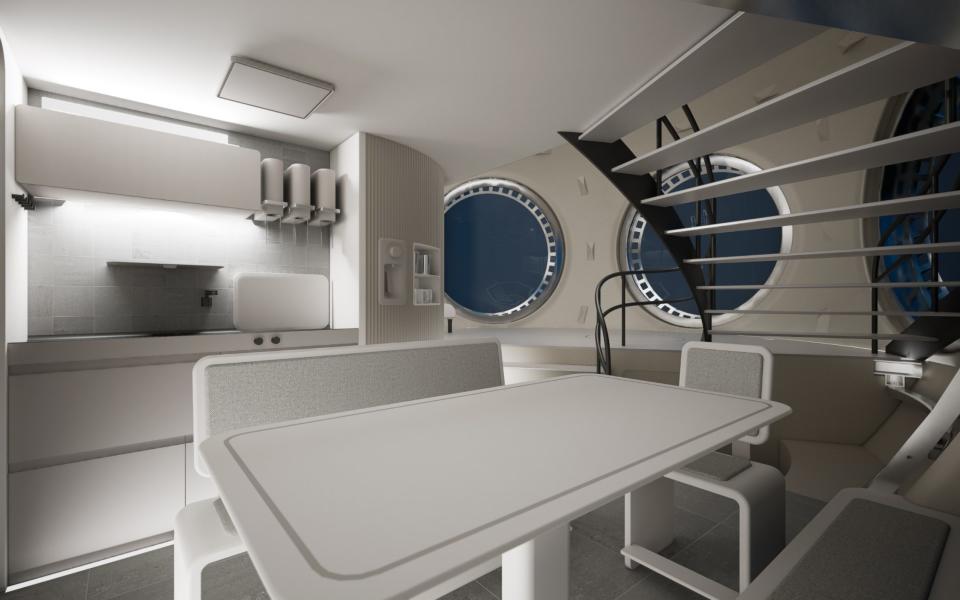Beautiful, terrifying and unfathomably vast, the world’s oceans are some of the least understood places on the planet. There are things out there we don’t know, to say the least, and since it’s a fundamentally inhospitable place, exploration has been dangerous and slow. But Deep’s president, Sean Wolpert, doesn’t just want to accelerate our exploration of the oceans, he also wants people to live there.
Stating that there may be missing keys to terrestrial problems hidden under the waves, Wolpert says, “What I am most excited about is finding something that will improve people’s quality of life in the long term.”
“It is extremely likely that we will find a cure for something like cancer in our oceans.
“For example, if you think about sea sponges, they use chemical processes to remove organisms that try to eat them in order to ensure their continuity and survival. So what can we learn from this process in terms of our own biological structure?
“It’s a very exploratory area for pharmaceuticals,” he says.
Deep, an ocean technology and research company funded by private investors, launched secretly in 2021 but now has 100 staff across the UK, US and Canada. They are working on an underwater habitat called “Sentinel” that the company says will allow humans to survive 656 ft below the waves.


A wooden prototype already exists. The fully functional product, which will be partially 3D printed, is expected to undergo testing in a flooded quarry in Gloucestershire before being rolled out to the real world, potentially in the Mediterranean in 2027. The substation, which has a capacity of 14,000 cubic meters and runs on renewable energy, will host six people who can live underwater for 28 days.
“This will truly open the door to a new wave of ocean exploration,” says product director Rick Goddard.
“Researchers may be studying the behavioral cycles of tuna or examining coral bleaching. They may be investigating carbon capture or exploring an archaeological wreck off the coast of a Greek island.
“There will also be incidental science, where scientists can sit in one of the centre’s huge windows and observe the behavior of animals. We want climate scientists to be there. We need huge amounts of data on ocean acidity, temperature, and basic data that tells us what the oceans are like,” says Goddard.


It will be designed to rest anywhere up to 656 ft on the ocean’s continental shelf, the edge of the twilight zone where natural light penetrates.
This area is too deep for most divers, but too shallow to afford the cost of commercial deep-water equipment, so the water band has been little explored.
“It will inspire children to become marine engineers and biologists because it will be extremely exciting. And what they will see and do for humanity will be very powerful,” says Goddard.
Living underwater brings with it significant problems, which is why it hasn’t been very successful to date. Prior to this, there had been a handful of very limited experiments, with French ocean explorer Jaques-Yves Cousteau attempting to build an underwater station in the 1960s and achieving some success, albeit at a depth of only 32 ft. The US Navy also built the Sealab habitat in the 60s, but ultimately the funding diverted to the space race was lost.
Key problems include low temperatures, high pressure and corrosion. The change in gases (such as increasing helium) also causes electrical equipment to malfunction and people to become cold; The Sentinel habitat will need to be heated to 32 degrees to make it feel like 21 degrees. High humidity also creates a lot of potential for bacterial growth, people run the risk of skin and ear infections, and pressure also means people die. Taste buds stop working; hence those in the Sentinel will eat foods full of spices.
Goddard adds: “What we want to achieve is not an individual deployment on one site. It’s about getting the right people under the ocean and opening up the ocean to non-experts.”
“The ultimate goal is to have hundreds of these deployed around the world. This is not a case of scratching an itch. This is what the planet and our ocean need.”
According to Deep, this is needed not to accommodate the growing global population, but because the ocean is the planet’s final frontier.
National Geographic Society research shows that more than 80 percent of it has never been mapped or surveyed; This means we know less about it than we do about the surface of the moon. Approximately 90 percent of ocean species are believed to remain undiscovered; We know about 226,000 ocean species so far, but some scientists estimate there may be several million more.
The area Sentinel can reach (656 ft) is the deepest point where sunlight penetrates the ocean and is where 90 percent of marine species are found. But climate change, overfishing and ocean acidification are causing unprecedented changes in the oceans, and these need to be understood urgently, according to Deep.
“The Sentry can go up to 200 meters, but the sweet spot will be 50 or 60 meters down, where it will be lighter,” Goddard says.


Initially, trained divers will be among the people who will stay on the Sentinel, but Deep predicts that marine scientists, climate scientists and archaeologists with limited diving training will soon also take part. Participants will be put under pressure via a submarine that will lock onto the top of the Sentinel. The center will be pressurized to the same level as the surrounding ocean, meaning divers can leave for hours without needing to depressurize.
They will do this through a “moon pool” (a hole that reaches into the ocean) and will be permanently connected to the mother ship by cables, just like spacewalks in the deep.
They can then bring the samples back to Sentinel and study them in the onboard laboratory; This is revolutionary in science because it will mean that materials will not need to be brought back to the surface to be studied and can be decomposed.
At the end of their stay, participants will stay in a pressure chamber for varying periods of time before returning to the atmosphere at sea level.
Similar to spaceflight, the experience is also psychologically challenging due to the level of isolation and isolation from the outside world.


Mari Östin, Deep’s human factors engineer, says: “Most of our research is done by people on the NASA space station.
“We need to look at sleep because it is very important. “They had problems in space with the sound of people snoring.”
In fact, there are many parallels with space. Space travel is now routinely undertaken by private companies such as Richard Branson’s Virgin Galactic or Elon Musk’s SpaceX.
Wolpert adds: “There is an amazing world to explore and we are special individuals with this passion.
“We don’t mind being compared to Musk; it’s arguable that his Tesla and SpaceX projects are helping the planet.”
Deep has spent undisclosed millions on the project so far, but believes its project will be cost-effective for scientists, companies and researchers – especially once hundreds of these substations come online.
“The cost will be like a timeshare. It would be more cost-effective for universities or companies to rent a substation for weeks at a time,” says Wolpert.
And will it be exploitative?
“That’s always a possibility. “After all, we are humans,” he says. “But the real risk that people might think about is deep-sea mining, and we’re not prepared to do that. That’s not extractive. We’re here to leave the ocean in a better, more understandable place.”
Goddard adds: “The people going there now, especially oil and gas, are people with that in mind.
“So what we do is we put other people there who have eyes. It’s called Sentinel for a reason. This is its purpose; to be a watchtower.”
But the company is clear that, as exciting as the next few years will be, the most interesting phases of the project will occur in the relatively distant future.
COO Mike Shackleford says: “Let’s be clear; It was science fiction, but we crossed out the fiction. The ocean is being destroyed. There are many countries that commit acts of ocean terrorism.
“We need to be there, survey the area, and bring people to life on the water in the process. This is the beginning of a 300-year project.”